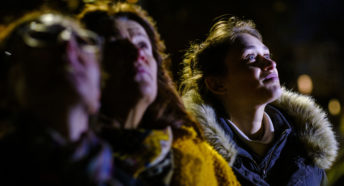Counting stars: what our 2019 results showed
Each year we run a citizen science project to count stars in the night sky and here we reveal the 2019 results – and they make for interesting reading.
In 2019, a whopping 2,300 people took part in our annual citizen science experiment to count stars in the night sky – and we’ve got some fascinating results. The 2019 count took place in the first three weeks of February 2019, with more people than ever looking to the heavens to see how many stars in the constellation Orion they could see.
We’ve used results of the cosmic census, supported by the British Astronomical Association, to create an interactive map displaying people’s view of the night sky.
We run the annual Star Count to engage people in the wonders of stargazing and promote the wonder of deep, dark skies. True darkness is a unique feature of the countryside and we want everyone to be able to experience dark skies blanketed with stars. Light pollution can impact this darkness and make it harder to see stars; in fact, over half of our star counters (57%) actually found they could see ten stars or fewer in Orion, with many stars masked by light from street lighting and buildings.
This light, leaking from human developments and affecting even the skies over rural areas, affects our health (impacting on sleep patterns and, of course, limiting enjoyment of dark nocturnal views) and wildlife and nature, too. The good news is that there’s more that we can all do to limit the impact of artificial light on our night skies – and some changes are simple and easy for everyone to make.
Emma Marrington, our dark skies campaigner, said: ‘We’re so grateful to the many people who took the time to get out and take part in our Star Count. The results remind us that light doesn’t respect boundaries; it spreads for miles from towns, cities, businesses and motorways. And this makes it so much harder to have one of the countryside’s most magical sights – a dark, starry night sky.
‘But we have some fantastic opportunities to limit light pollution, reduce carbon emissions and save money. Using well-designed lighting only when and where it is needed, investing in street light dimming schemes and (in consultation with the local community and police) considering part-night lighting are all great ways to keep skies dark.’
And she pointed out that we can all do our bit by ensuring that security and outdoor lights are only turned on when and where they are needed. You can explore more ideas about the ways we can all make small changes to reduce light pollution on our Night Blight website.
Want more inspiration about star-spotting? Read our article about the best places to go stargazing.








